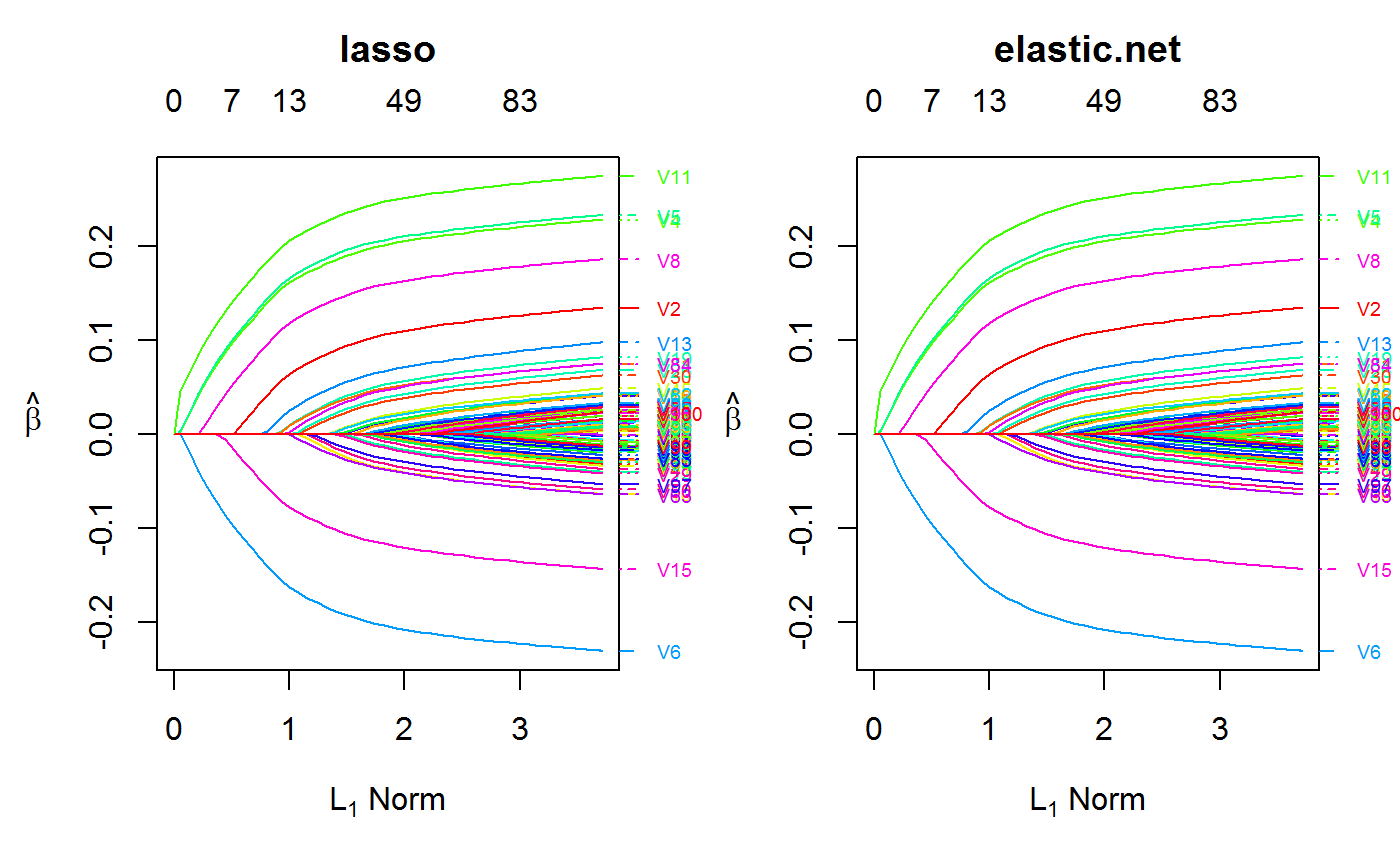Orthogonalizing EM with precomputed XtX
oem.xtx( xtx, xty, family = c("gaussian", "binomial"), penalty = c("elastic.net", "lasso", "ols", "mcp", "scad", "mcp.net", "scad.net", "grp.lasso", "grp.lasso.net", "grp.mcp", "grp.scad", "grp.mcp.net", "grp.scad.net", "sparse.grp.lasso"), lambda = numeric(0), nlambda = 100L, lambda.min.ratio = NULL, alpha = 1, gamma = 3, tau = 0.5, groups = numeric(0), scale.factor = numeric(0), penalty.factor = NULL, group.weights = NULL, maxit = 500L, tol = 1e-07, irls.maxit = 100L, irls.tol = 0.001 )
Arguments
| xtx | input matrix equal to |
|---|---|
| xty | numeric vector of length |
| family |
|
| penalty | Specification of penalty type. Choices include:
Careful consideration is required for the group lasso, group MCP, and group SCAD penalties. Groups as specified by the |
| lambda | A user supplied lambda sequence. By default, the program computes
its own lambda sequence based on |
| nlambda | The number of lambda values - default is 100. |
| lambda.min.ratio | Smallest value for lambda, as a fraction of |
| alpha | mixing value for |
| gamma | tuning parameter for SCAD and MCP penalties. must be >= 1 |
| tau | mixing value for |
| groups | A vector of describing the grouping of the coefficients. See the example below. All unpenalized variables should be put in group 0 |
| scale.factor | of length |
| penalty.factor | Separate penalty factors can be applied to each coefficient. This is a number that multiplies lambda to allow differential shrinkage. Can be 0 for some variables, which implies no shrinkage, and that variable is always included in the model. Default is 1 for all variables. |
| group.weights | penalty factors applied to each group for the group lasso. Similar to |
| maxit | integer. Maximum number of OEM iterations |
| tol | convergence tolerance for OEM iterations |
| irls.maxit | integer. Maximum number of IRLS iterations |
| irls.tol | convergence tolerance for IRLS iterations. Only used if |
Value
An object with S3 class "oem"
Examples
set.seed(123) n.obs <- 1e4 n.vars <- 100 true.beta <- c(runif(15, -0.25, 0.25), rep(0, n.vars - 15)) x <- matrix(rnorm(n.obs * n.vars), n.obs, n.vars) y <- rnorm(n.obs, sd = 3) + x %*% true.beta fit <- oem(x = x, y = y, penalty = c("lasso", "elastic.net", "ols", "mcp", "scad", "mcp.net", "scad.net", "grp.lasso", "grp.lasso.net", "grp.mcp", "grp.scad", "sparse.grp.lasso"), standardize = FALSE, intercept = FALSE, groups = rep(1:20, each = 5)) xtx <- crossprod(x) / n.obs xty <- crossprod(x, y) / n.obs fit.xtx <- oem.xtx(xtx = xtx, xty = xty, penalty = c("lasso", "elastic.net", "ols", "mcp", "scad", "mcp.net", "scad.net", "grp.lasso", "grp.lasso.net", "grp.mcp", "grp.scad", "sparse.grp.lasso"), groups = rep(1:20, each = 5)) max(abs(fit$beta[[1]][-1,] - fit.xtx$beta[[1]]))#> [1] 8.788848e-16#> [1] 8.788848e-16
